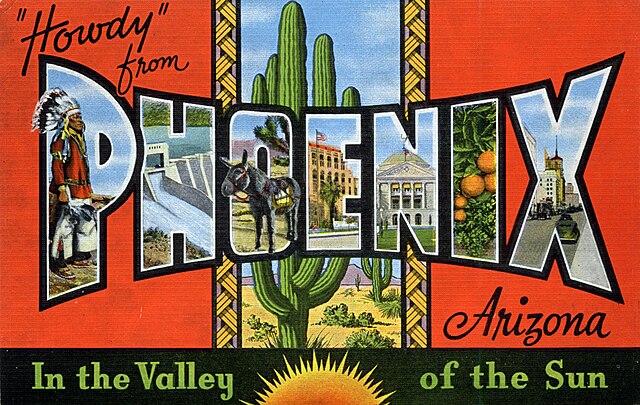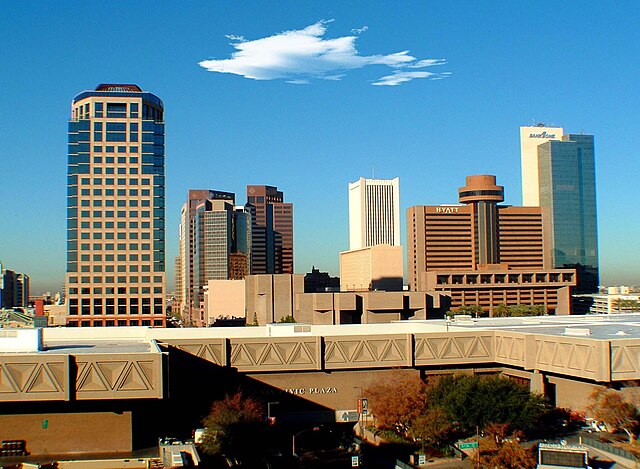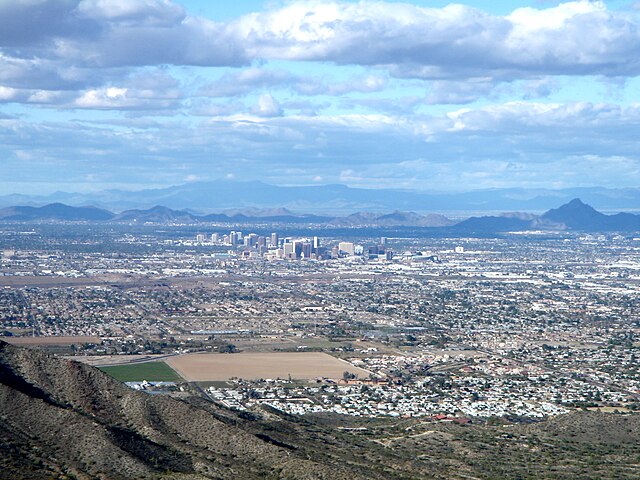Phoenix, Arizona – the Valley of the Sun – is famous for its scorching summers and blissful winters. But there’s so much more to Phoenix weather than just “hot and dry.” Whether you’re planning a visit, considering a move, or you’re already a desert dweller wanting to understand your local climate better, this comprehensive guide will give you everything you need to know about Phoenix weather patterns.
Have you ever wondered why Phoenix can hit 120°F in summer but feel like paradise in winter? Or why dust storms seem to appear out of nowhere? Let’s dive deep into the fascinating world of Phoenix weather and discover what makes this desert metropolis tick climatically.
Understanding Phoenix’s Desert Climate
What Makes Phoenix Weather Unique?
Phoenix sits in the heart of the Sonoran Desert, which creates a unique microclimate that’s both predictable and extreme. Unlike other major cities that deal with humidity, snow, or frequent rain, Phoenix operates on a completely different weather playbook.
The city experiences what meteorologists call a “hot desert climate” – technically classified as BWh in the Köppen climate system. This means you’ll get blazing hot summers, mild winters, and very little precipitation throughout the year. In fact, Phoenix receives only about 8 inches of rain annually, making it one of the driest major cities in the United States.
What’s truly remarkable about Phoenix weather is its consistency. You can plan outdoor activities months in advance with confidence, especially during the winter months. The sun shines approximately 300 days per year here – that’s more sunshine than almost anywhere else in the country!
The Science Behind Desert Weather Patterns
Ever wonder why deserts are so hot during the day but can get surprisingly cool at night? It’s all about something called thermal capacity. Desert air has very low humidity, which means it can’t hold heat the way humid air does. During the day, the sun heats everything up rapidly, but once it sets, that heat escapes just as quickly into the atmosphere.
This phenomenon is why Phoenix experiences such dramatic temperature swings, especially during spring and fall. You might start your morning in a light jacket and end your evening in shorts and a t-shirt. The lack of cloud cover also means the sun’s rays hit the ground directly, creating those infamous scorching summer temperatures.
Phoenix Weather by Season

Spring Weather in Phoenix (March-May)
Spring in Phoenix is like nature’s way of saying “sorry” for the upcoming summer. This season offers some of the most pleasant weather you’ll find anywhere in the United States.
Temperature Ranges and What to Expect
March kicks off spring with average highs around 75°F and lows dipping to about 50°F. By May, you’re looking at highs reaching the mid-90s with overnight lows in the comfortable 60s. The beauty of Phoenix spring weather lies in these moderate temperatures – warm enough for outdoor activities but not so hot that you need to seek shelter indoors.
Rainfall during spring is minimal, typically less than an inch per month. This means you can count on clear, sunny skies for most of your outdoor plans. The combination of warm days, cool nights, and virtually no rain makes spring the perfect time for camping, hiking, and exploring the numerous outdoor attractions around Phoenix.
Spring Activities and Weather Considerations
Spring weather in Phoenix opens up a world of outdoor possibilities. This is prime hiking season when the desert comes alive with wildflowers (if there’s been adequate winter rain). Popular trails like Camelback Mountain, South Mountain, and Papago Park are at their most comfortable during these months.
However, don’t let the pleasant mornings fool you – spring temperatures can climb quickly. Always carry water, even on short hikes, and plan outdoor activities for early morning or late afternoon. The desert sun is intense year-round, so sunscreen isn’t optional – it’s essential.
Summer Weather in Phoenix (June-August)
Ah, Phoenix summer – the season that separates the locals from the tourists. Summer weather in Phoenix isn’t just hot; it’s a whole different level of heat that demands respect and preparation.
Extreme Heat: Surviving Phoenix Summers
Summer temperatures in Phoenix regularly exceed 110°F, with many days hitting 115°F or higher. The record high of 122°F was set in June 1990, and that’s a number that makes even longtime residents take notice. But here’s what makes Phoenix summer heat particularly challenging – it’s relentless.
Unlike other hot climates where temperatures might drop significantly at night, Phoenix summer nights often stay above 90°F. This phenomenon, called the “urban heat island effect,” means the city’s concrete and asphalt absorb heat all day and release it slowly at night. Your air conditioning becomes your best friend, and energy bills reflect this reality.
The good news? Phoenix summer heat is a “dry heat,” which means you won’t deal with the oppressive humidity found in other hot climates. Sweat evaporates quickly, helping your body cool itself more efficiently. Still, dehydration happens fast, so water consumption becomes a serious consideration.
Monsoon Season: When the Desert Gets Wet
Just when you think Phoenix weather is predictable, along comes monsoon season (typically July through September). This is when the desert gets dramatic, and Phoenix weather becomes genuinely exciting.
Monsoon storms bring spectacular lightning displays, powerful winds, and brief but intense rainfall. These aren’t your typical afternoon showers – monsoon storms can drop an inch or more of rain in less than an hour, creating flash floods in normally dry washes.
The humidity during monsoon season also changes the feel of Phoenix weather significantly. Instead of dry heat, you get what locals call “sticky heat” – temperatures in the 100s combined with humidity levels that can reach 50% or higher. It’s uncomfortable, but it also brings relief in the form of dramatic thunderstorms and slightly cooler temperatures.
Fall Weather in Phoenix (September-November)
Fall weather in Phoenix represents the light at the end of the summer tunnel. As September progresses, temperatures gradually become more manageable, though early fall can still pack a punch.
The Perfect Weather Window
October and November offer some of the most perfect weather conditions you’ll find anywhere. Daytime temperatures settle into the comfortable 80s and 90s, while nighttime lows drop into the pleasant 60s and 70s. This is when Phoenix truly shines as a destination.
The monsoon season typically ends by late September, bringing back those clear, sunny skies that Phoenix is famous for. Fall weather creates ideal conditions for all the outdoor activities that summer heat makes challenging – hiking, biking, outdoor dining, and festival attendance.
Many longtime Phoenix residents consider fall their favorite season. The oppressive summer heat is behind them, but the cooler winter weather hasn’t arrived yet. It’s a sweet spot that reminds everyone why they love living in the desert.
Winter Weather in Phoenix (December-February)
Winter weather in Phoenix is why millions of “snowbirds” flock to the Valley of the Sun each year. While much of the country battles snow, ice, and freezing temperatures, Phoenix enjoys some of the most pleasant winter weather on the planet.
Why Phoenix is a Winter Paradise
Winter temperatures in Phoenix typically range from highs in the mid-60s to mid-70s, with overnight lows rarely dropping below 40°F. Frost is rare, and snow in the city is virtually unheard of (though you might see snow on the surrounding mountains).
This mild winter weather means outdoor activities continue year-round. Golf courses stay busy, hiking trails remain accessible, and outdoor patios at restaurants become the preferred seating. The combination of sunshine and comfortable temperatures creates an outdoor lifestyle that’s hard to match anywhere else during winter months.
Winter also brings Phoenix’s driest weather, with some months receiving no measurable precipitation at all. The lack of rain, combined with mild temperatures and abundant sunshine, creates perfect conditions for outdoor events and activities.
Monthly Weather Breakdown

Peak Summer Months: June, July, and August
These three months represent Phoenix weather at its most extreme. June often brings the year’s highest temperatures, with average highs around 104°F. July and August continue the heat while adding monsoon complexity to the weather pattern.
During these months, outdoor activities shift to very early morning or evening hours. Swimming pools become necessity rather than luxury, and understanding heat-related illness becomes crucial for safety. Many outdoor venues close during peak summer hours, and hiking trails may have heat advisories.
Transition Months: April, May, September, October
These months represent Phoenix weather in transition – moving from pleasant to hot (spring) or from hot back to pleasant (fall). April and May see rapidly rising temperatures, while September and October bring gradual cooling.
These transition months require flexible clothing choices and weather awareness. Morning temperatures might be perfect for outdoor activities, while afternoon heat can become dangerous. It’s during these months that locals perfect the art of layering and timing outdoor activities.
Mild Winter Months: November through March
From November through March, Phoenix weather becomes nearly perfect for outdoor living. These months attract visitors from around the world and represent peak tourist season in the Valley of the Sun.
November and March serve as bookends to winter, with slightly warmer temperatures than the core winter months of December, January, and February. Throughout this period, rain is infrequent, sunshine is abundant, and temperatures remain comfortable for virtually any outdoor activity.
Extreme Weather Events in Phoenix
Haboobs: Phoenix’s Dramatic Dust Storms
One of the most spectacular and intimidating Phoenix weather phenomena is the haboob – massive dust storms that can tower thousands of feet into the air and stretch for miles across the desert landscape.
Haboobs typically occur during monsoon season when powerful thunderstorm downdrafts pick up dust and debris, creating these dramatic walls of dust. These storms can reduce visibility to near zero within minutes and deposit layers of dust throughout the metropolitan area.
While haboobs look apocalyptic, they’re generally more inconvenient than dangerous. However, they can cause serious problems for people with respiratory conditions and create hazardous driving conditions. The dust can also damage air conditioning systems and create cleanup challenges for homeowners.
Flash Floods and Monsoon Dangers
Phoenix’s flat terrain and lack of vegetation create perfect conditions for flash flooding during monsoon storms. Normally dry washes can become raging torrents within minutes, and city streets can flood when storm drains become overwhelmed.
Flash flooding is one of the most dangerous aspects of Phoenix weather. The combination of hard-packed desert soil, intense rainfall, and urban development creates situations where water has nowhere to go except across roads and through low-lying areas.
Arizona has a “Stupid Motorist Law” that makes drivers liable for rescue costs if they drive into flooded roadways. This law exists because flash flood dangers are real and rescue operations are expensive and dangerous for first responders.
Best Times to Visit Phoenix Based on Weather
If you’re planning to visit Phoenix, weather should be your primary consideration when choosing dates. The city experiences such extreme seasonal variations that your experience can be completely different depending on when you arrive.
For most visitors, the sweet spot is October through April. During these months, Phoenix weather is comfortable for outdoor activities, sightseeing, and exploring the natural beauty of the Sonoran Desert. Hotel rates are highest during this period, particularly in January through March, but the weather conditions make it worth the extra cost.
May and September can offer good weather if you time your visit carefully. Early May and late September provide reasonable temperatures, though you’ll need to be prepared for heat and plan activities accordingly.
June through August should be avoided unless you’re specifically seeking extreme heat or you’re comfortable with indoor activities during daylight hours. Some visitors enjoy the summer experience, but it requires careful planning and heat preparation.
Weather-Related Activities and Planning
Outdoor Activities by Season
Phoenix weather dictates the rhythm of outdoor life in the desert. Winter months (November through March) are perfect for hiking, biking, golf, tennis, and virtually any outdoor activity. Popular hiking destinations like Camelback Mountain, Piestewa Peak, and South Mountain see their heaviest usage during these months.
Spring and fall offer excellent conditions for outdoor activities, though you’ll need to time activities to avoid the heat of the day. Early morning starts become essential as temperatures climb, and afternoon activities may need to be cut short.
Summer outdoor activities require significant modifications. Hiking is best done before sunrise, and even then, it can be dangerous on extremely hot days. Many outdoor enthusiasts shift to indoor climbing gyms, swimming, or early morning activities during the summer months.
Indoor Alternatives During Extreme Weather
Phoenix’s extreme summer weather has created a robust indoor entertainment and activity scene. Shopping malls, museums, movie theaters, and indoor recreational facilities become havens during the hottest months.
Many Phoenix residents develop “reverse seasonal affective disorder” – feeling confined and depressed during summer months when outdoor activities become limited. Understanding this pattern helps newcomers and visitors prepare mentally for the seasonal lifestyle changes that Phoenix weather demands.
Climate Change and Phoenix Weather Trends
Phoenix weather patterns are changing as global climate change affects regional weather systems. Average temperatures are rising, extreme heat events are becoming more frequent, and weather patterns are showing signs of increased variability.
The urban heat island effect is intensifying as the city grows, creating even hotter conditions in developed areas compared to surrounding desert. This trend is making summer weather more challenging and extending the period of extreme heat.
Monsoon patterns are also showing changes, with some years bringing more intense storms and others experiencing delayed or weakened monsoon seasons. These changes affect everything from water resources to outdoor activity planning.
Weather Preparedness and Safety Tips

Summer Heat Safety
Living with or visiting during Phoenix’s extreme summer weather requires serious preparation and respect for the heat. Heat-related illnesses are real dangers that can develop quickly in desert conditions.
Always carry more water than you think you’ll need – dehydration happens faster in dry heat than most people realize. Wear light-colored, loose-fitting clothing and broad-brimmed hats when outdoors. Never leave people or pets in parked cars, even for short periods.
Know the signs of heat exhaustion and heat stroke. Heat exhaustion includes heavy sweating, weakness, nausea, and headache. Heat stroke is a medical emergency characterized by high body temperature, confusion, and potentially loss of consciousness.
Monsoon Preparedness
Monsoon season brings different challenges that require their own preparation strategies. Keep emergency supplies including flashlights, batteries, and water in case of power outages. Avoid outdoor activities when thunderstorms are forecast.
Never attempt to cross flooded roadways, even if the water appears shallow. Flash floods can sweep away vehicles and create life-threatening situations. When dust storms approach, pull over safely, turn off your lights, and wait for the storm to pass.
Conclusion
Phoenix weather is a study in extremes – from scorching summers that test human endurance to winters so perfect they attract millions of visitors from around the world. Understanding these patterns isn’t just helpful for planning activities or visits; it’s essential for safely enjoying everything the Valley of the Sun has to offer.
The key to thriving in Phoenix’s unique climate is respect and preparation. Summer heat demands serious safety considerations and lifestyle adjustments, while winter weather provides opportunities for outdoor living that few places can match. Monsoon season adds drama and excitement to the weather mix, creating spectacular displays while requiring additional safety awareness.
Whether you’re visiting Phoenix or calling it home, embracing the seasonal rhythms of desert weather will enhance your experience. The extreme summer heat makes the perfect winter weather even more appreciated, while the reliable sunshine and dry climate create opportunities for outdoor activities that weather in other climates simply doesn’t allow.
Phoenix weather isn’t for everyone, but for those who learn to work with it rather than against it, the Valley of the Sun offers a unique and rewarding climate experience that keeps millions of people coming back year after year.
Frequently Asked Questions
Q: What is the hottest month in Phoenix?
A: June is typically the hottest month in Phoenix, with average high temperatures around 104°F and frequent days exceeding 110°F. July and August are also extremely hot, but June usually holds the record for highest average temperatures and the most consecutive days over 110°F.
Q: Does it ever snow in Phoenix?
A: Snow in Phoenix is extremely rare, with measurable snowfall occurring only a handful of times in recorded history. The last significant snowfall was in 1998, and before that, you’d have to go back to 1985. While snow occasionally dusts the surrounding mountains, the city itself maintains warm enough temperatures to prevent snow accumulation.
Q: When is monsoon season in Phoenix and what should I expect?
A: Monsoon season typically runs from July through September, with peak activity in July and August. Expect dramatic thunderstorms with intense lightning, heavy rain in short bursts, powerful winds, and impressive dust storms (haboobs). The humidity during this period makes the heat feel more oppressive than the dry summer heat.
Q: What’s the best time of year to visit Phoenix for outdoor activities?
A: The best time for outdoor activities in Phoenix is November through March, when temperatures are mild and rainfall is minimal. October and April can also be excellent, though you’ll need to plan activities for cooler parts of the day. This period offers perfect conditions for hiking, golf, tennis, and exploring the desert landscape.
Q: How do locals cope with Phoenix’s extreme summer heat?
A: Phoenix residents adapt by shifting their schedules and activities during summer months. Many start outdoor activities before sunrise, spend midday hours indoors, and resume outdoor activities after sunset. Homes and cars are equipped with powerful air conditioning, and locals stay hydrated, dress appropriately, and respect the heat by avoiding unnecessary outdoor exposure during peak temperature hours.

